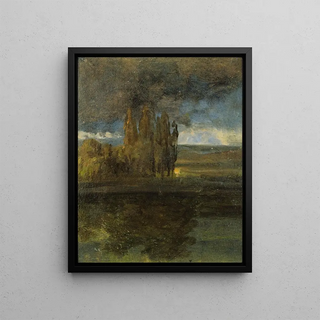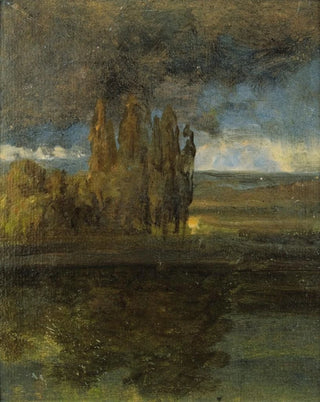Art print | View of the Elbe and the bastion der Br - Johan Christian Dahl


View from behind

Frame (optional)
In the rich and varied panorama of art history, some works manage to capture the essence of a place with such precision that they transcend the mere visual frame. "Vue sur l'Elbe et le bastion der Br - Johan Christian Dahl" is one of these creations that, through its beauty and depth, invites the viewer to a complete immersion in the landscape. This painting, emblematic of Nordic romanticism, evokes not only the majesty of the Elbe River but also the harmony between man and nature. Through this artwork, Johan Christian Dahl offers us a window into a world where light and shadow dance in perfect synchronization, revealing the poetry of a moment frozen in time.
Style and uniqueness of the work
Johan Christian Dahl's style is distinguished by its meticulous approach and keen sense of composition. In "Vue sur l'Elbe et le bastion der Br," every detail is carefully considered, from the reflections of the sky in the river waters to the delicate nuances of the trees lining the shore. The color palette, oscillating between soft hues and striking contrasts, creates an atmosphere that is both serene and dynamic. This art print is characterized by a harmonious balance between realism and idealization, typical of romanticism. Dahl manages to evoke a sense of escape, transporting the viewer to an environment where nature and architecture coexist in perfect symbiosis. The light, omnipresent, plays a central role, illuminating the elements of the scene and breathing vibrant life into the scene.
The artist and his influence
Johan Christian Dahl, often considered the father of Norwegian romantic landscape art, knew how to mark his era with his undeniable talent and unique vision. Trained at the Royal Danish Academy of Fine Arts in Copenhagen, he was strongly influenced by the grand landscapes of Norway, which he interpreted with rare sensitivity. His work is not limited to a simple reproduction of nature; it is a celebration of wild beauty and the emotions it evokes. Dahl also played a key role in the evolution of

Matte finish

View from behind

Frame (optional)
In the rich and varied panorama of art history, some works manage to capture the essence of a place with such precision that they transcend the mere visual frame. "Vue sur l'Elbe et le bastion der Br - Johan Christian Dahl" is one of these creations that, through its beauty and depth, invites the viewer to a complete immersion in the landscape. This painting, emblematic of Nordic romanticism, evokes not only the majesty of the Elbe River but also the harmony between man and nature. Through this artwork, Johan Christian Dahl offers us a window into a world where light and shadow dance in perfect synchronization, revealing the poetry of a moment frozen in time.
Style and uniqueness of the work
Johan Christian Dahl's style is distinguished by its meticulous approach and keen sense of composition. In "Vue sur l'Elbe et le bastion der Br," every detail is carefully considered, from the reflections of the sky in the river waters to the delicate nuances of the trees lining the shore. The color palette, oscillating between soft hues and striking contrasts, creates an atmosphere that is both serene and dynamic. This art print is characterized by a harmonious balance between realism and idealization, typical of romanticism. Dahl manages to evoke a sense of escape, transporting the viewer to an environment where nature and architecture coexist in perfect symbiosis. The light, omnipresent, plays a central role, illuminating the elements of the scene and breathing vibrant life into the scene.
The artist and his influence
Johan Christian Dahl, often considered the father of Norwegian romantic landscape art, knew how to mark his era with his undeniable talent and unique vision. Trained at the Royal Danish Academy of Fine Arts in Copenhagen, he was strongly influenced by the grand landscapes of Norway, which he interpreted with rare sensitivity. His work is not limited to a simple reproduction of nature; it is a celebration of wild beauty and the emotions it evokes. Dahl also played a key role in the evolution of






